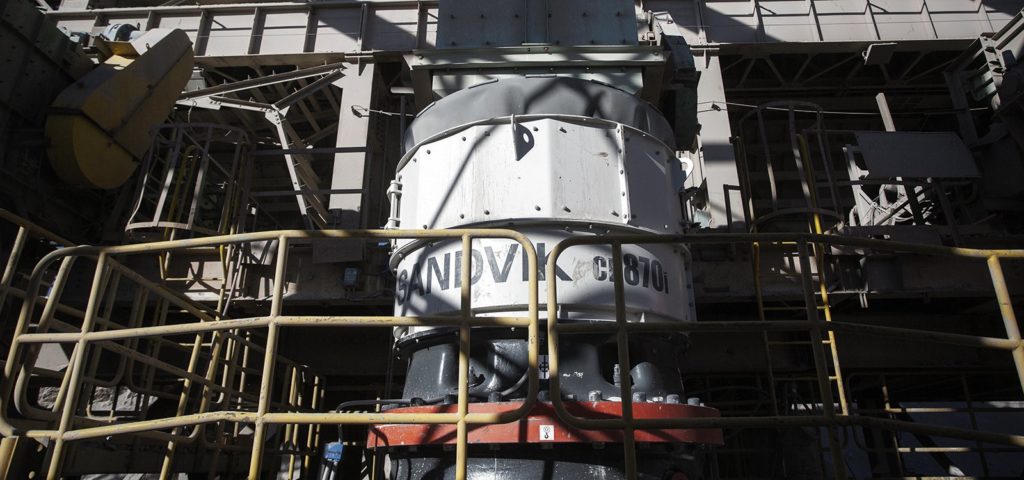The Mantos Copper Mantos Blancos operation commissioned its first Sandvik crusher back in 2001, a Sandvik CH660 that replaced an outdated competitor model. Three years later the mine replaced another obsolete competitor crusher, opting for a higher-capacity Sandvik CH870 – the first of that model installed anywhere. The mine’s first Sandvik CH870 was such a success that Mantos Blancos installed another in 2006 to replace the smaller Sandvik CH660 and boost circuit capacity. By 2008, the mine had migrated to Sandvik CH870 in all three tertiary positions.
In recent years, Mantos Copper has also grown increasingly interested in digitalisation and the Industrial Internet of Things, and the potential efficiency and productivity benefits connected data can enable at a mass mining operation. When an opportunity arose to implement connectivity in the all-important tertiary sulphide crushing line, Mantos Blancos seized it.
After a decade of reliable and productive operation, the mine upgraded its youngest Sandvik CH870 to a Sandvik CH870i. Mantos Blancos took advantage of Sandvik’s Reborn solution, a more cost-effective option than a new installation, since existing infrastructure and auxiliaries of the Sandvik CH870 could be re-utilised. The Sandvik CH870i Reborn, backed by a three-year extended warranty, was online in just two days.
“If a crusher can process the ore at Mantos Blancos, it can process ore anywhere.” It’s a common sentiment across the Chilean mining industry. The rock is so hard and abrasive that many mines view Mantos Blancos as the ultimate proving ground. “Suppliers want to test their products here, and Chilean mines asks if machines were tried in Mantos Blancos, because if they work here, they work everywhere,” says Pablo Carrasco, Mantos Copper’s purchasing superintendent for Mantos Blancos and the company’s Mantoverde mine.
Eight hundred metres above sea level in the Atacama Desert – one of the most arid places on the planet – Mantos Blancos produces around 50,000 t of fine copper each year. The mine runs an oxide circuit for leaching and a sulphide circuit for flotation. By increasing the processing capacity of its sulphide plant, Mantos Blancos plans to maintain current production levels through 2035. The sulphide circuit consists of a primary crusher, a secondary crusher and three tertiary crushers in a closed circuit, for the production of a product approaching 98 percent smaller than ¼” (6.4 mm) to supply the ball mills.
“The tertiary line is the backbone of the sulphide plant,” Carrasco says. “If this line doesn’t operate continuously, we have no production in the next stages. The Reborn solution allowed us to keep many components of the current machine, which are still perfectly useful. The extended warranty, which includes periodic condition inspections, really puts our minds at ease.”
“The competitive advantage that Sandvik crushers have, something the rest of the market doesn’t offer, is that even having the machine working at its full potential, the crusher doesn’t present any problems,” says plant maintenance chief Luis Guerrero.
The mine used to change liners as often as weekly but Sandvik worked with Mantos Blancos to extend utilisation cycles to 21 days. “The improvements Sandvik has made help, first of all, from a cost perspective, because the lining is less worn,” Carrasco says. “There are fewer interruptions. The plant had to stop working to change liners so often, so it benefits continuity to have longer liner cycles, and this has a direct impact on production.”











